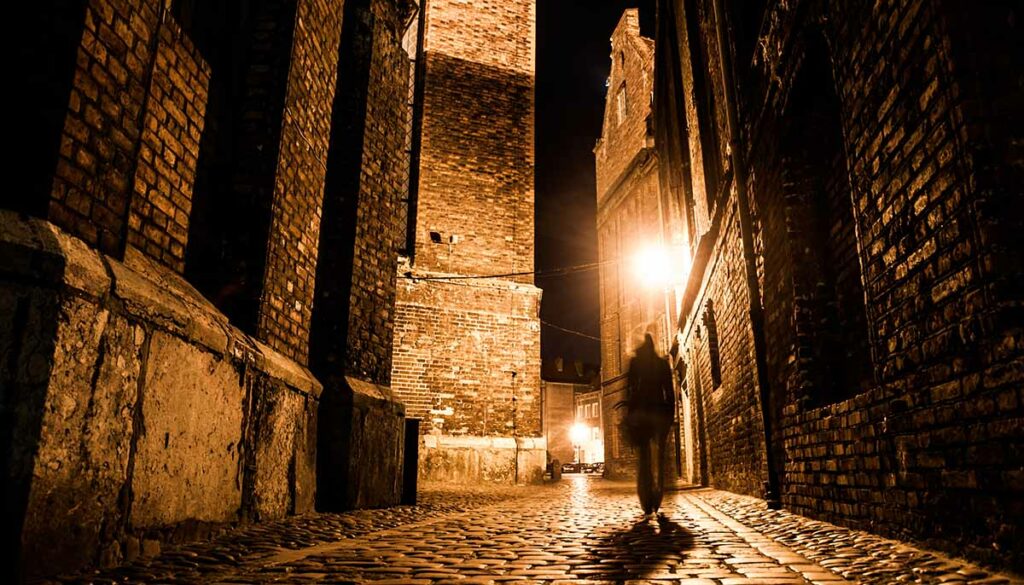What makes us so fascinated with tales of true crime? Is it the thrill of being close to something so out of the ordinary and terrifying as a serial killer? Or, is it the desire to solve cases that have gone unresolved for decades? In the case of the murders commonly attributed to “Jack the Ripper,” it seems that both could be at play.

Jack the Ripper, an anonymous serial killer active in London throughout 1888, terrified and mystified the public in equal measure. The “Ripper” murders are widely considered the first modern murders of the newspaper era. Each of the unsolved slayings dominated front-page news in London.
Were the killings all performed by the same person, though? Or were they perpetuated by a string of copycat killers? The media circus around the murders gripped London for months in 1888 and completely dominated the public’s attention. Even now, over 100 years after the killings, writers and amateur sleuths still try to weigh in on the unsolved crimes. Who was Jack the Ripper–and, indeed, was there ever a single perpetrator responsible for the crimes?
Background
In the 1880s, the East End of London was considered a rough part of town. It was home to various criminals and well-known numerous illicit deeds a visitor could indulge in late at night. Gambling, partying, and meeting with women of ill repute were all draws to the East End and neighborhoods like Whitechapel.
This was exacerbated by an influx of immigrants to Whitechapel throughout the 1880s. London was a popular destination for newcomers from Ireland and Jewish refugees from Russia in the late 1800s. This was due to its relative wealth and opportunities for employment. This led to a sudden overcrowding of living space in the city. The population grew to 80,000 over the course of a decade.
As work dried up and more people arrived, the area experienced a massive economic downturn. Poverty came to define Whitechapel, and the crime rate in the region skyrocketed. This led to numerous police actions in the district, as constables began patrolling the area at night. As a result, tensions between the East End and the city authorities were at a new high by 1888. A season of horror began on August 31, 1888, when a passerby discovered the mutilated body of Mary Ann Nichols.
The Murders

Warning: the following sections contain descriptions of grisly murders. Reader discretion is advised.
The first of the five murders commonly attributed to Jack the Ripper occurred in the late summer of 1888. The victim, Mary Ann Nichols, worked out of a brothel in Whitechapel like many women who tried to scrape by making a living in the East End in this era. When her body was discovered, the police were taken aback by the extreme violence her killer had employed. It left her remains badly mangled and suggested an extremely unhinged individual had attacked her.
This pattern continued throughout the fall of 1888. The next victim, Annie Chapman, was found roughly a week later, on September 8. Chapman, like Nichols, had been killed by two cuts to her throat and severely mutilated post-mortem. Initially, the police chalked these two murders up to the general social unrest of the region and didn’t link them together.
However, the “double event” of September 30 led the police and the public to suspect a serial killer was targeting “women of the night” in Whitechapel. After nearly a month without incident, the alleged killer struck again, taking the lives of both Elizabeth Stride and Catherine Eddowes within hours of each other.
Police Link the Murders
The police began to link the murders after Catherine Eddowes’ remains were found in a surprisingly similar condition as Nichols and Chapman’s. Once again, the killer had employed a slash across the throat and eviscerated his victim, leaving her organs nearby at the crime scene. Strangely, though, the killer hadn’t mutilated the body of Stride, which led to some hesitation before the police linked it to the other murders.
The killer struck one final time on November 9, 1888, taking the life of Mary Jane Kelly in the single-bed apartment where she lived. Kelly’s remains were the most severely mutilated of all the victims, likely owing to the fact that the killer had a substantial amount of time alone with the corpse.
Throughout this era, the newspapers remarked that the murders were increasing in brutality. Other similarities, like the killer striking only on weekend days and only at the end of a month, led some to believe the killer might have been a professional. Likewise, the perpetrator’s apparent knowledge of anatomy gave many the impression that he might be either a surgeon or a butcher.
Other Murders

Other murders from this era have been linked to the Ripper by various authors. Some contend that two earlier murders, of Emma Elizabeth Smith and Martha Tabram, were by the same criminal. Others also include some later murders, like the killings of Rose Mylett, Alice McKenzie, and Frances Coles, as examples of “Ripper” crimes.
Numerous factors play into the perception of the “canonical five” murders as all being the product of the same depraved individual. Authors point to the escalating mutilation of Nichols, Chapman, Eddowes, and Kelly as being likely linked. The outlier, Stride, may have been spared such mutilation, though. Investigators suspect that the Ripper was almost caught in the act while killing her in public.
Since Stride died shortly before Eddowes, some sleuths contend that the Ripper might have felt frustrated and unfulfilled by being unable to “complete” his grisly mutilations. Thus, he sought out another victim to make up for this failure. Still, the debate over which of the murders, if any, were committed by the same person is a matter of ongoing debate.
Contemporary Investigation
Contrary to popular belief, the London police were perfectly capable investigators even in the 1880s. While most modern forensic techniques didn’t exist yet, the police still pursued leads and used old-fashioned detective techniques to try to solve crimes. Still, in the case of Jack the Ripper, the absence of things like CCTV cameras and crime scene forensics collection could have aided the killer’s attempts to evade justice.
Frustratingly, many police records that included descriptions of the investigation were destroyed during the Blitz in World War II. The surviving records indicate that the police were partly hindered in their investigations into the Whitehall murder by the tense relationship between East Enders and the authorities. Even in cases where eyewitnesses saw the victims with strangers shortly before their deaths, the witnesses couldn’t agree upon things like a description of the person they saw.
In all, the police conducted hundreds of interviews with locals. They detained as many as eighty suspects. Each was eliminated due to insufficient evidence connecting them to the crime. A popular misconception of the investigation holds that the police simply gave up looking for the perpetrator. In reality, the investigation followed much the same procedures as modern police work.
Suspects

The details of the crimes led the police to suspect a London local with regular employment. The murder took place at night, on the weekend. It was always at the end of a month or within one week of the start of a month. An early theory postulated by journalists and the public holds that the Ripper might have been an upper-class person from a nicer area of London. He ventured to the East End to commit acts of violence against poor people. This would mean he’d be less likely to be caught.
The number of suspects named by later investigators is unbelievably high. In the modern era, it has become easy for any author to accuse anyone alive at the time of the crime. After all, anyone living in 1888 has long since passed away. There are no libel laws or journalistic guidelines to worry about now.
However, one of the most frustrating aspects of the case is, despite the presence of so much physical evidence and a large amount of writing about the murders, the evidence against any of the likeliest suspects is circumstantial at best. There’s no surefire case against anyone the police ever brought in for questioning. Had there been, they would have made an arrest and taken the killer to trial.
The Legend Persists
And, to be honest, had the police found a likely suspect and brought him in, most people would have likely never heard of this case. The enduring mystery spawned a legend. People remember the tale of Jack the Ripper because it’s a story with no concrete answers.
Who was the serial killer stalking the alleys and bars of Whitechapel in the fall of 1888? Experts can’t even agree on who, exactly, the murderer killed. True crime enthusiasts need only hear the words “Jack the Ripper” to conjure up images of dingy common houses, desperate East Enders, and hard-nosed investigators. Who was Jack the Ripper? That’s a question to which we may never have an answer.












